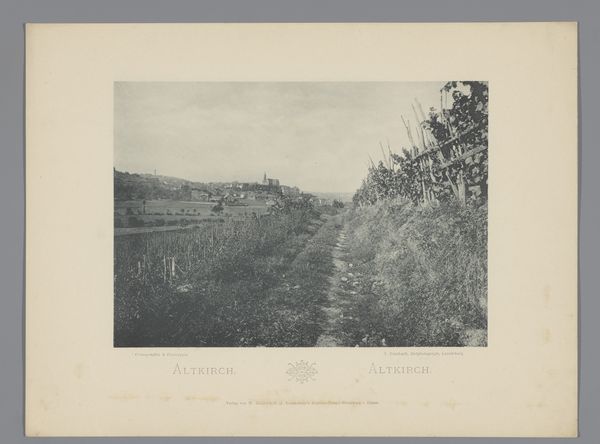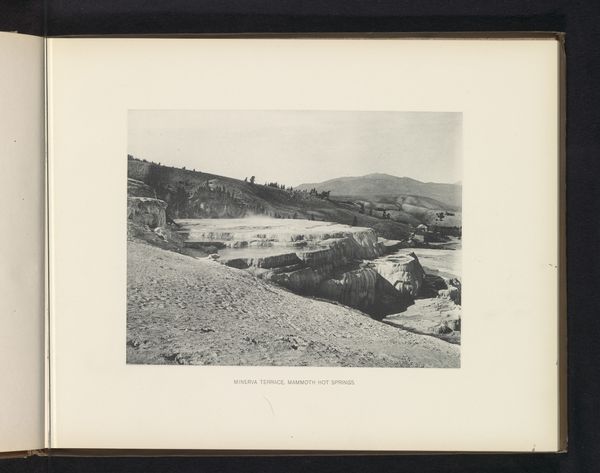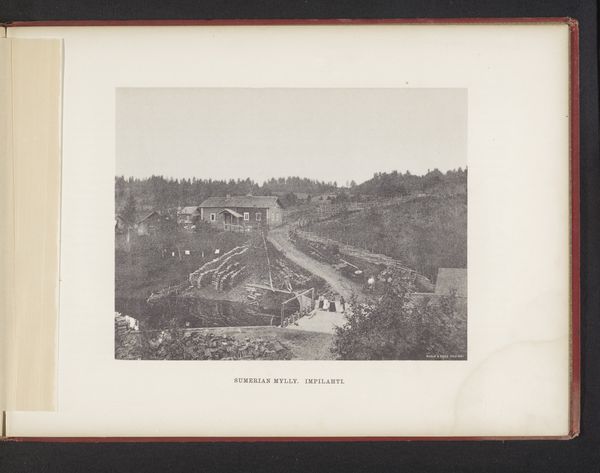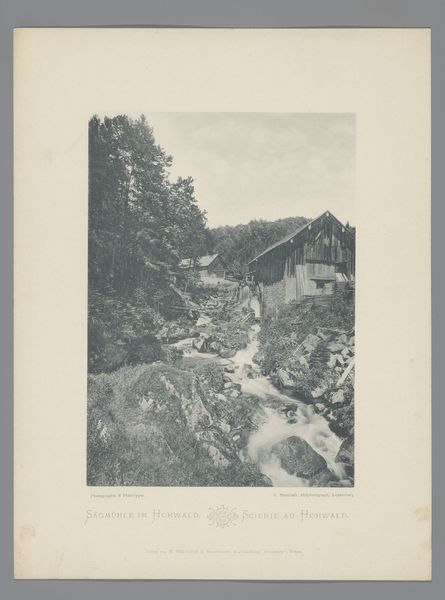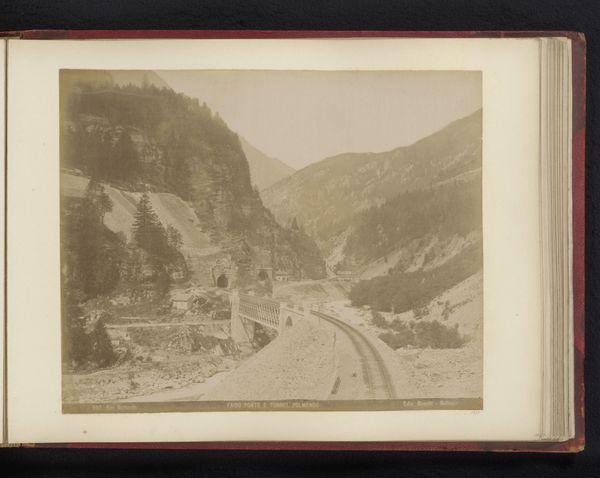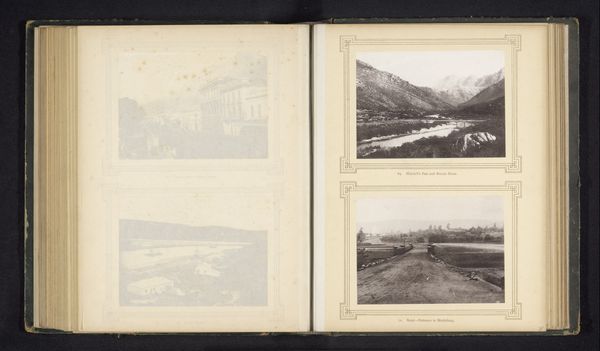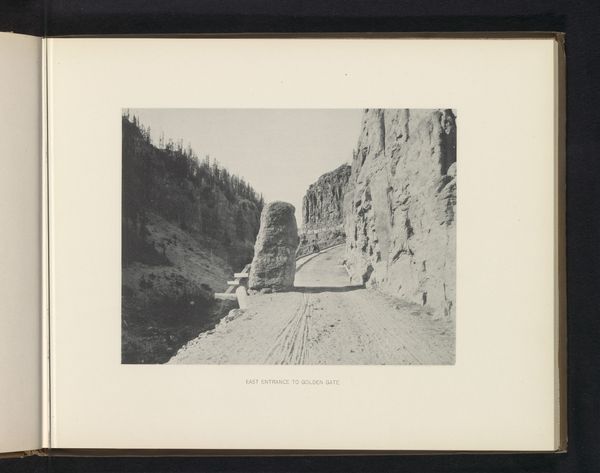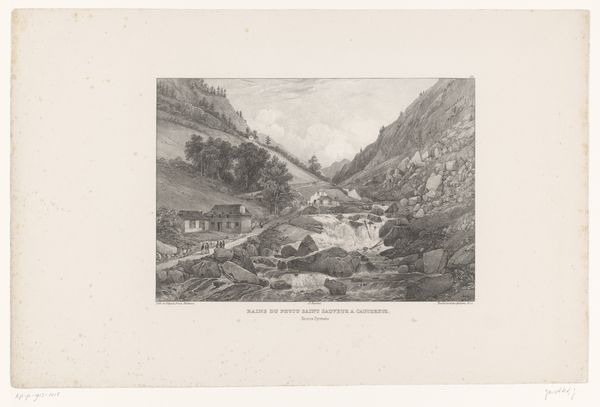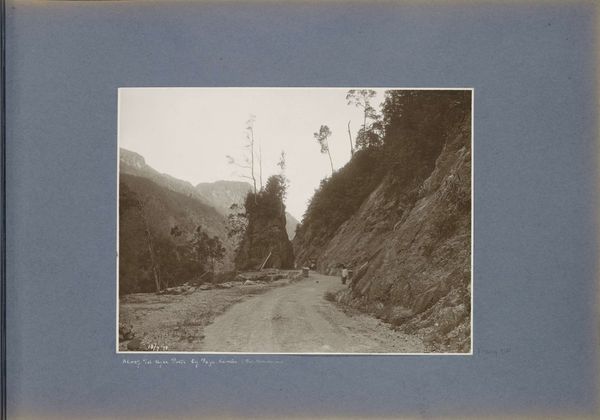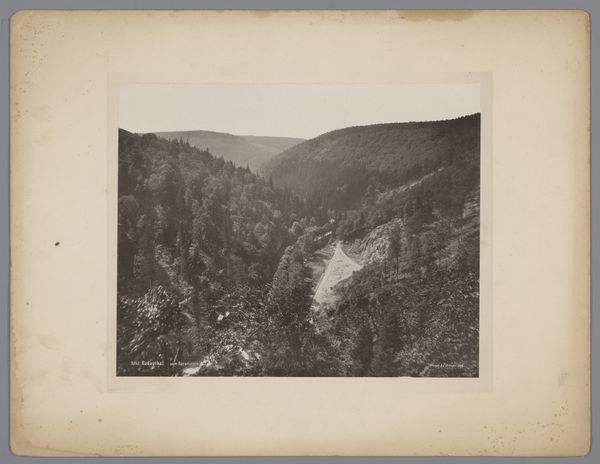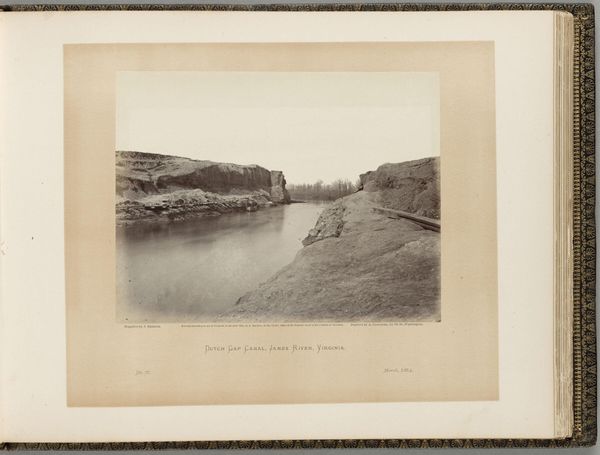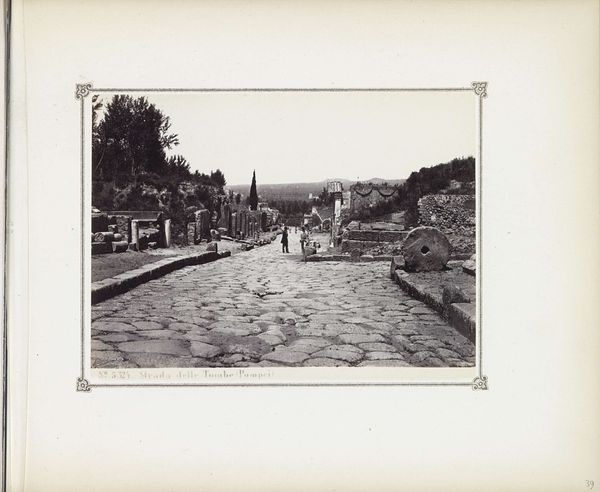
Dimensions: height 153 mm, width 217 mm
Copyright: Rijks Museum: Open Domain
Curator: There’s such a stillness radiating from this image... the way the road winds invitingly toward that distant abbey. It’s got a hazy, almost dreamlike quality, doesn’t it? Editor: It certainly does. We’re looking at “Gezicht op de abdij van Pairis bij Orbey,” or "View of Pairis Abbey near Orbey," a gelatin-silver print created before 1894 by Charles Bernhoeft. What strikes me is the composition—the foreground's almost chaotic jumble of stones contrasted with the orderly abbey. Curator: Right? The light too! It softens the entire scene, yet emphasizes those weighty rocks at the road's edge. What stories those stones could tell. Perhaps about pilgrims travelling through these valleys. Or communities living on and shaping the land. Editor: Absolutely, and those stones might even serve as an entry point to discussing labour, ownership, and historical tensions around resource extraction in the Alsace region. What appears idyllic conceals potential socio-political undercurrents. The pictorialist style—focusing on a dream-like atmospheric softness—creates a veil that could both romanticize the site and conceal this potential political significance. Curator: A veil, I like that! It invites me to linger, imagine. Those soft tones are everything. It's that blurry-soft focus; I see that Bernhoeft seems influenced by Impressionism. Did this image feel…contrived…given those political tensions that may underlie it? Editor: "Contrived" perhaps implies conscious deception. I am interested in how these aesthetics operated – particularly with an abbey as its focus – amid broader narratives of power and social control. To what extent does the photograph, and perhaps Bernhoeft himself, passively participate in obfuscation of potentially violent relationships through pastoral romanticism? Curator: A powerful tension between image and context, I’m learning so much from it, but on the level of pure emotional response I feel a strange blend of longing and a feeling of something unresolved or unknown. Perhaps, this is precisely Bernhoeft’s brilliance, the ability to evoke through visual absence as much as through presence. Editor: Indeed. Its evocative quality encourages a continual questioning, a layering of perspectives, and hopefully a commitment to challenging easy answers.
Comments
No comments
Be the first to comment and join the conversation on the ultimate creative platform.

